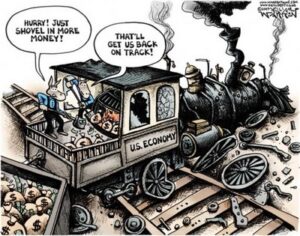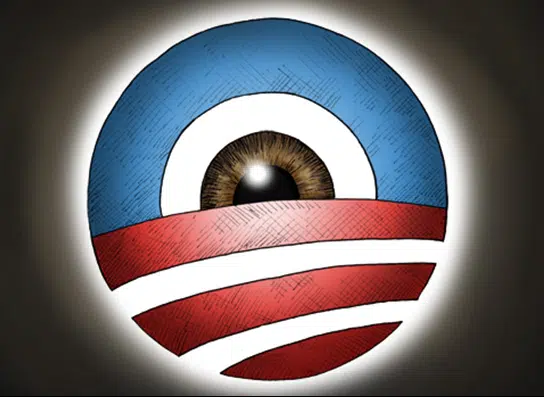
From 1952 to 1982, it nearly quadrupled, from about $250 billion to $1 trillion. And from its 1922 level of $23 billion, it increased by 967 percent.
See a pattern?
What will the national debt be in 2042? An historically “modest” tripling to $50 trillion? Or perhaps a mind-boggling $100 trillion?
But not to worry, says New York Times pundit Paul Krugman. No matter how large it gets, we can’t default on our debt.
“[W]e have our own currency,” Krugman reassured the American people in a Nov. 25 column, and the government “literally can’t run out of money. After all, it can print the stuff,” unlike Greece, whose currency is controlled by the European Union.
Besides, he writes, interest rates are low and there is no sign investors are about to flee from the relative safety of treasuries.
That may be so — for now. Yet, for all of Krugman’s happy talk of investors continuing to buy U.S. bonds, he understates the degree to which the government is already resorting to the printing press to meet its weekly funding obligations.
Some $1.65 trillion of the debt is held by the Federal Reserve. Another $4.84 trillion of debt is held in the Social Security, Medicare, and other trust funds.
That means 39.7 percent of the debt — some $6.5 trillion — is held by government agencies. So, yeah, we can print it. But it is hardly a sign of fiscal health or of high demand for treasuries when just to refinance the current level of debt, the government must borrow 40 cents of every dollar from itself.
The share of government debt held by the government itself will only grow this decade. The Office of Management and Budget projects debt held by the trust funds will rise to $6.3 trillion by 2022 alone. As for the Fed, there is no telling how much it will print to finance Washington, D.C.’s insatiable appetite for more spending.
But this is no evidence that a default “can’t happen”.
It merely proves if it were not for the printed money, the government would have apparently defaulted on its obligations years ago. But that is no reason to celebrate.
Even though the national debt soared 10 percent last year alone, countries like China held back on any net purchases of debt — indicating that demand overseas may be beginning to wane.
The basis for the dollar’s reign as the world’s reserve currency rests on the willingness of overseas partners to continue to transact in dollars. But if we print too much to refinance our growing debts — in the process exporting inflation to our own creditors — suddenly the dollar becomes less attractive as a means of exchange.
And that is where the danger lies.
Not that suddenly one day in the near future there will be a run on dollar-denominated assets — although that is certainly always a risk, if only a remote one. But, that over the coming years, the dollar will continue to lose backing in the global economy amid severe financial strain, leading to its eventual collapse as the reserve currency.
At that point, a run on treasuries and an ensuing default would certainly not be out of the question. The foreign bailout would come to an end. Krugman has an apparent belief that the rest of the world will continue to paper over our debts without question for posterity. But that assumption is awfully risky and may prove to be fatally wrong.
When the other shoe drops, or how large the debt will be then is anyone’s guess. But to pretend that it “can’t happen” shows a remarkable lack of foresight — akin to middle-of-the-pack lemmings that follow the crowd over the cliff to their own demise.
Bill Wilson is the President of Americans for Limited Government. You can follow Bill on Twitter at @BillWilsonALG.







